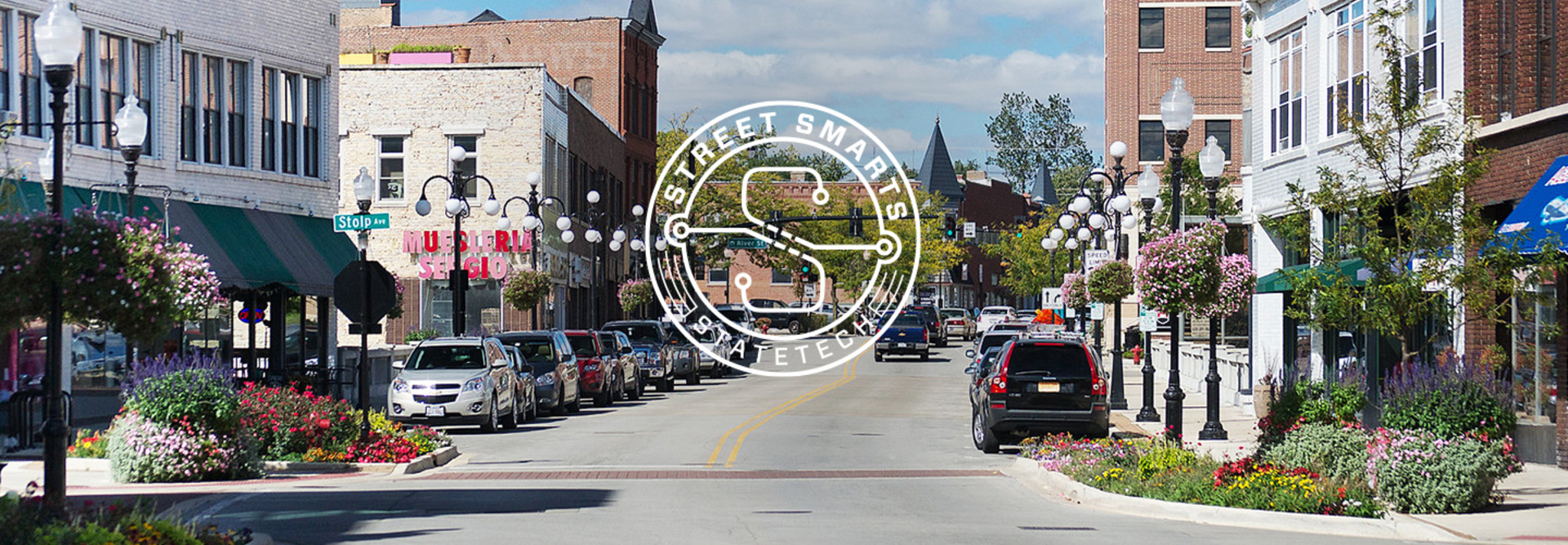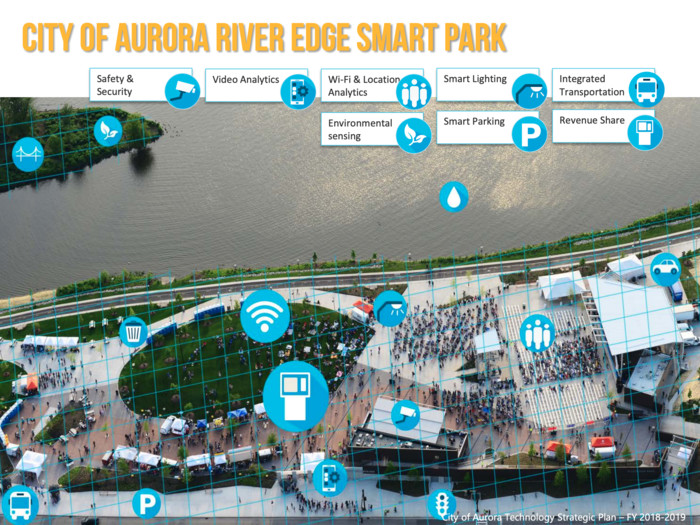Laying the Groundwork for Increased Connectivity
An expanded version of Aurora’s fiber-optic network would ultimately total 645 miles, offering greater broadband capabilities for businesses and residents, including gigabit speeds of up to 100Gbps, Pegues says.
“We’re looking at providing a foundation for current and future smart city applications,” he says. “It helps us enable competition, which improves the availability of services to the community and provides ubiquitous high-speed internet access.”
The recent COVID-19 pandemic has highlighted a number of cities’ connectivity needs, according to Cory Fleming, senior technical specialist at the International City/County Management Association.
Aurora released its Technology Strategic Plan in 2019 to guide its smart city development. Source: City of Aurora, Ill.
“There are a lot of communities that don't have the necessary fiber optics,” Fleming says. “Especially for children who are now in new learning environments, it’s important to keep that in mind that we do need to provide those services.”
Nearly half of the households in Aurora with annual incomes below $30,000 don’t have broadband service, according to the Technology Strategic Plan the city released in 2019.
“Expanded connectivity will help to close the connectivity gap with some of our underserved communities,” says Aurora Mayor Richard C. Irvin. “During the pandemic, our children and families are home and doing remote learning. Increased connectivity will provide opportunities to educate more efficiently. In addition, expansion will reach geographical parts of the city that were previously not connected, allowing for additional economic development.”
Providing More for Residents Involves Multipurpose Solutions
Cities deploy technology for multiple purposes instead of focusing on single-purpose solutions, ICMA’s Fleming says.
“There’s a lot of opportunity to use technology in different ways; that’s probably what Aurora is trying to do,” Fleming says. “We don't know what’s going to happen after the COVID-19 crisis. Certain local government budgets are going to take a hit, so the importance of thinking about how you can use the software solutions and apps that are available and get more out of investments you’ve already made is something a lot of governments are going to be looking at.”
Some of Aurora’s physical assets — streetlights, for example — could perform double duty, possibly containing components such as surveillance cameras, Pegues says.
“The city is looking to use its foundational infrastructure to support smart city applications — lights, emergency applications, gunshot detection [via] audio-equipped sensors that offer faster detection for public safety,” he says.
The city’s top smart tech priorities involve public safety, education and economic growth, according to Irvin.
To strengthen safety, Aurora hopes to add a critical intelligence incident center that will filter more than 400 real-time feeds from cameras placed in public areas — the city currently uses some Axis models — into a central location with a video wall.












